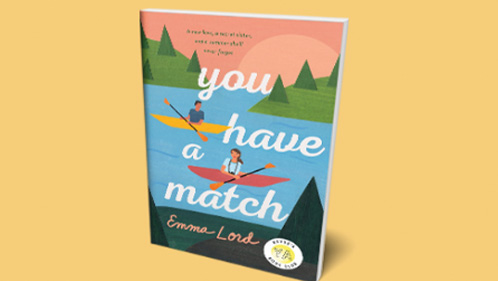How Schools are Killing the Love of Reading
Ask a teenager how they feel about reading, and you’ll likely get an eye roll, a groan, or a halfhearted, “I don’t like books.”
AP & Honors Mathematics
Explore Wiley titles to support both AP and Honors mathematics instruction.
Literacy Skills & Intensive Reading
Connections: Reading – Grades 6–12
Empower student success with a proven intensive reading program that develops strong reading skills in striving readers.
Drama, Speech & Debate
Basic Drama Projects 10th Edition
Build students’ confidence and competence with comprehensive, project-based theatre instruction.
Literature
Connections: Literature
Support learners as they study dynamic, relevant texts and bring the richness of diverse voices to students through literature.
Literature & Thought
Develop critical thinking, reading, and writing across literacy themes, genres, historical eras, and current events.
Language Arts
Vocabu-Lit® – Grades 6–12
Help students build word power using high-quality contemporary and classic literature, nonfiction, essays, and more.
Connections: Writing & Language
Help students develop grammar, usage, mechanics, vocabulary, spelling, and writing and editing skills.
Reading/English Language Arts
Measuring Up to the English Language Arts Standards
Incorporate standards-driven teaching strategies to complement your ELA curriculum.
English Language Learners
Measuring Up for English Language Learners
Incorporate research-based best practices for ELLs with an approach that includes a focus on language acquisition strategies.
Mathematics
Measuring Up to the Mathematics Standards
Incorporate standards-driven teaching strategies to complement your mathematics curriculum.
Foundations
Measuring Up Foundations
Help students master foundational math skills that are critical for students to find academic success.
Science
Measuring Up to the Next Generation Science Standards
Give students comprehensive NGSS coverage while targeting instruction and providing rigorous standards practice.
Assessment
Measuring Up Live
Deliver innovative assessment and practice technology designed to offer data-driven instructional support.
For a better website experience, please confirm you are in:
If you've ever worked with students who struggle with reading—or experienced that struggle yourself—you’ve likely seen it firsthand: the hesitation, the frustration, the visible discomfort when asked to read aloud or engage with a challenging text. These reactions are often misunderstood. Too quickly, they're labeled as disinterest, laziness, or a lack of motivation. But the truth is more complex and far more important to recognize.
Reading anxiety is not the root cause. It’s a symptom. It signals that something deeper is interfering with a student’s ability to access text successfully. It might be undiagnosed dyslexia or another language-based learning difference. It could be the result of years of academic failure, eroded confidence, or a steady diet of materials that don’t match the student’s skill level. Sometimes, it's more than one of the above.
It becomes a slippery slope, though, as the reading anxiety causes more reluctance which leads to fewer gains and less growth and probably lower grades, which then heightens the anxiety, and then, well, you get it...
As a teacher coach, mentor, and consultant working across schools and districts, I’ve seen this dynamic play out in countless classrooms. I’ve watched teachers try everything in their toolkit to engage a reluctant reader, only to end up discouraged themselves. What I've learned is this: people rarely avoid something they feel competent doing. As adolescents solidify their personalities and willpower, it's very easy for adults to chalk these things up to behaviors related to opposition and defiance. Yet, if a student is resisting reading, it’s not necessarily a matter of will—it’s more likely a matter of confidence and support.
When we start asking the right questions—“What’s making reading hard for this student?” instead of “Why won’t this student read?”—everything changes. We stop interpreting the behavior as a problem and start seeing it as a message. With the right interventions, aligned instruction, and maybe even a trauma-informed lens, I’ve seen students begin to trust the process again. Skill grows. Confidence builds. Anxiety recedes.
Reading anxiety is a red flag, not a character flaw. When we treat it like a symptom instead of a diagnosis, we open the door to real progress—for students, and for the educators who are working so hard to support them.

Ask a teenager how they feel about reading, and you’ll likely get an eye roll, a groan, or a halfhearted, “I don’t like books.”

When the calendar gets crowded with winter concerts, makeup quizzes, assemblies, and general mid-year chaos, the idea of doing a full close-reading...

The goals of ELA instruction in middle and high school range from developing basic reading comprehension and writing skills to reading and writing...

One of the key shifts in English Language Arts classrooms is the move for students to engage routinely with complex text. To prepare students for the...
.jpg)
While most early literacy development occurs in elementary school, teachers in middle and high schools continue shaping students' reading abilities,...

In this activity, each student will create a "dating profile" for a book. By highlighting key characteristics of the book, students will craft...

How do I get my kids in reading and writing shape, so they can move forward? Here are 6 questions I am asking myself as I attempt to help students...

Last week during her first week of school, I had a conversation with a fresh-out-of-college-first-year teacher who was spending her evenings typing...

Every time I open up Instagram, Facebook, or Twitter, I’m given the option to post to stories or urged to open the stories of others. Pictures that...

This webinar with Dr. Brandon Abdon, author of our AP Language and Composition and AP Literature and Composition AMSCO coursebooks, and guest ELA...

Students' favorite streaming services, movies, and video games are all packed with compelling storytelling. To get them more excited about reading, I...

I don’t know about you, but I hate grading reading comprehension questions. First of all, the answers usually could be “borrowed” from websites like...

